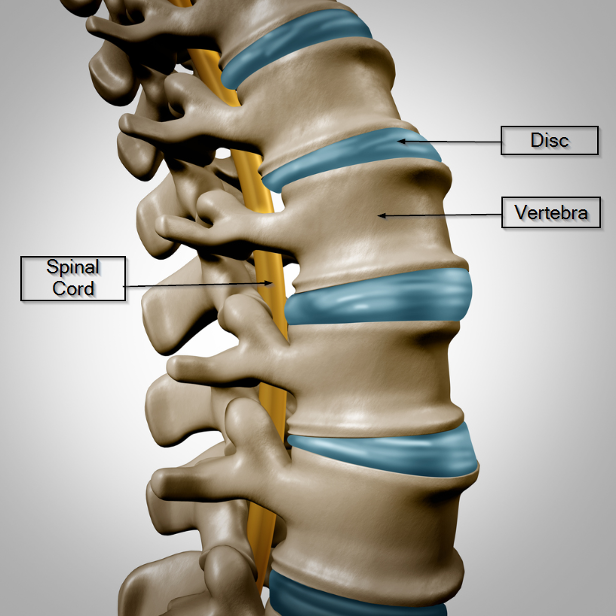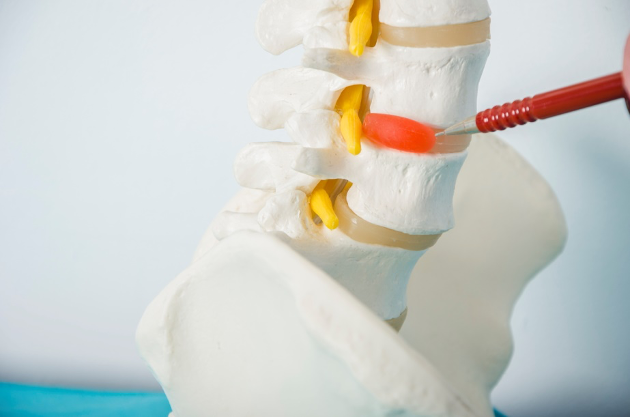Often patients come in with back injuries from lifting objects. Frequently the injuries are caused by lifting heavy objects, but not always. People can also injure their back by bending over incorrectly and straining their back. Here is just one anecdote as an example:
One man had just finished doing some heavy labor. He was about to sign the invoice for his client but, his pen fell out of his pocket. He bent over and picked up his pen from the floor. But, as he tried to come back to a standing position he seriously injured his back.
Understanding Your Spine

To understand how to avoid a back injury from lifting, it helps to understand the basic anatomy of your spine. Your spine is composed of bones called the vertebrae and discs. The spine supports the nerves of the spinal cord that travel from your skull down to your tailbone. Each vertebra itself is a complex little bone. It includes a main body, an opening for the spinal cord, and spiny parts called processes jutting out. These poky processes are the places where ligaments attach, sort of like rubber bands. They keep each vertebra connected to the next one. Between each vertebra is a spongy disc. Discs provide cushioning and support for the bones.
Back Injuries from Lifting
In the story above, the man put too much pressure on the discs in his lower back when he bent over without bending his knees. This caused a slipped disc, also referred to as a herniated disc. To explain further, each disc has two parts: a soft, gelatinous inner portion and a tough outer ring. Injury or weakness can cause the inner portion of the disc to protrude through the outer ring (see picture below). This causes pain and discomfort. If the disc presses on one of your spinal nerves, you may also experience numbness and pain along the affected nerve.
Tips to Avoid Back Injury While Lifting
Whether you are going to lift a heavy object or a lightweight object, you must do this correctly. Often these injuries occur when someone is in a hurry and does not think about the consequences of lifting incorrectly. However, the damage it can do to the muscles in your back and your spine is not worth doing it wrong. Below are tips to avoid back injury. But we consider them more than tips, they are essential to protecting yourself from an injury that could cause you long-term pain.
Plan Before You Lift a Heavy Object
Think through how you are going to lift it and how you are going to carry it. If you think the weight might be too much to safely handle alone, ask for help. In many situations, such as lifting heavy boxes, you can use a hand cart rather than lifting and carrying the object yourself.
Bend at the Knees

If the heavy object is on the floor or a low shelf, squat before trying to pick it up. Tuck your chin and keep your back straight as you lift, resting the item on one knee as you prepare to stand.
Keep the Weight Close to Your Body
As you lift, hold the object close to your body. This will help keep the item stable and can help you avoid back injury.
Keep Feet Shoulder-Width Apart
A solid base of support is essential for safe lifting and preventing back injury. Make sure your feet are about shoulder-width apart and take small steps for better stability.
Lift with Your Legs
Leg muscles are much stronger than your back muscles. When you use your leg muscles when you lift you put less stress on your back muscles and therefore, have a better chance of avoiding injury.
Tighten Your Stomach Muscles
When you keep your stomach muscles tight while you lift, it puts your spine in a safer lifting position and helps prevent injury.
Don’t Twist Your Body
When you’re carrying a heavy item, face your body in the direction you need to go. Don’t twist your spine while walking or when putting an object down. If you need to turn, do so in small steps and lead with your hips, not your torso.
Don’t Carry a Load on One Side
To avoid suffering a back injury, make sure the load you are carrying is balanced. Lifting and carrying a heavy object on one shoulder, in one hand, or under an arm creates uneven pressure on the spine.
We cannot overstress how important following the above tips are for protecting your back from injury. If you have any questions or have recently had a back injury, contact us for a consultation.
Happy Holidays!
Dr. Craig Strickland, DC

